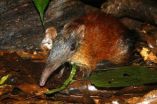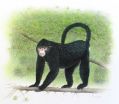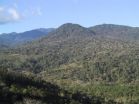(Press-News.org) A new assessment conducted by 174 scientists from around the world underscores a growing concern about the health of the world's biodiversity, quantifying the rate of decline among vertebrate species on a global scale for the first time. The team's results support the idea that our planet is currently experiencing its sixth mass extinction—nearly one fifth of all known vertebrate species are currently classified as Threatened on the International Union for the Conservation of Nature (IUCN) Red List, and an average of 52 species of mammals, birds, and amphibians move one category closer to extinction each year. The team, which includes California Academy of Sciences mammalogist Dr. Galen Rathbun, notes that over the past four decades, species extinction rates have exceeded normal background rates by two to three orders of magnitude. However, the team reports that species losses and declines would have been 20% worse in the absence of conservation efforts to protect threatened species. Thus, while current conservation efforts remain insufficient to offset the main drivers of biodiversity loss—including habitat loss, over-exploitation, and invasive alien species—targeted conservation efforts have had a measurable positive impact on the planet's vertebrate species. The research is reported in the October 26 issue of Science Express, the website for the journal Science (publication in the print version of Science will follow at a later date).
The study used data for 25,000 species from The IUCN Red List of Threatened Species™ to investigate the status of the world's vertebrates (mammals, birds, amphibians, reptiles and fishes) and how this status has changed over time. Their results indicate that approximately 20% of the worlds vertebrates are currently classified as Threatened (assigned the IUCN Red List status of Critically Endangered, Endangered, or Vulnerable), including 25% of all mammals, 13% of birds, 22% of reptiles, 41% of amphibians, 33% of cartilaginous fishes, and 15% of bony fishes. While vertebrates comprise just 3% of the known species on Earth, they play vital roles in their ecosystems and have great cultural and economic significance for humans. The new report demonstrates that these species continue to decline at an alarming rate, particularly in tropical areas. Global patterns of rising extinction risk are most marked in Southeast Asia, where agricultural expansion, logging, and hunting are the primary forces behind accelerating extinction rates.
California Academy of Sciences mammalogist Dr. Galen Rathbun contributed data to the report on the status of the members of the Afrotheria supercohort, an ancient group of African mammals that includes elephants, sea cows, hyraxes, sengis (also known as elephant-shrews), tenrecs, golden moles and aardvarks. Of the 83 species currently recognized in this supercohort, 30 are considered Threatened, and an additional eight species are considered data deficient—these species are quite possibly threatened, but scientists don't know enough about their distribution to be able to assign them a status. Therefore, somewhere between 36% and 46% of the world's Afrotheria species are currently threatened with extinction.
The Afrotheria supercohort represents one of the world's major mammalian evolutionary radiations. By one count, the seven groups that make up the Afrotheria represent nearly a third of all the living orders of mammals. However, the number of species within this supercohort is relatively low, totaling only about 1.5% of the world's mammals. This means that with relatively few species extinctions, entire groups of afrotherian mammals would cease to exist, thus terminating over 100 million years of evolution in Africa and drastically reducing that region's biodiversity.
"Almost any loss within the Afrotheria supercohort would be profound in terms of its evolutionary significance, because the members of this group carry such unique genes," says Rathbun. "Like many other groups, the afrotherian mammals are threatened predominantly by habitat loss and habitat degradation. For instance, all four of the forest-dwelling sengis are threatened with extinction, because the forests in Africa are rapidly disappearing."
While habitat loss and degradation are the primary drivers of rising extinction rates around the world, they are not the only culprits. The study authors noted several new threats that have emerged in recent years, including the use of a veterinary drug called diclofenac, an anti-inflammatory drug similar to ibuprofen that was introduced to the veterinary market on the Indian subcontinent in the early 1990s. While cattle can tolerate high doses of the drug, it soon became apparent that Asian vultures cannot—shortly after feeding on dead livestock treated with diclofenac, the birds die from renal failure. Since 1992, the population of Oriental White-backed Vultures has declined by more than 99%.
Based on the current trends, scientists estimate that the Oriental White-backed Vulture will be extinct in the wild in less than a decade. The only hope for the bird's survival is to establish an aggressive captive breeding program, which would enable scientists to reintroduce vultures to the wild once diclofenac is no longer in use. California Academy of Sciences ornithologist Dr. David Mindell has been studying genetic diversity in current and historical Oriental White-backed Vulture populations to help guide these captive breeding efforts and assess species status of the bird's closest relatives. His research has provided a clear course of action for ensuring that this species survives with a healthy, diverse gene pool.
Captive breeding programs are just one of the conservation strategies that are helping to mitigate species extinctions. The study authors also found evidence of notable conservation successes through legislation to limit hunting, establishment of new protected areas, and efforts to remove invasive alien species.
"The stark reality of accelerating species losses can lead to a feeling of hopelessness," says Mindell, Dean of Science at the California Academy of Sciences. "However, the IUCN data analyzed in this assessment show that concerted efforts by biologists and conservationists can make a positive difference in slowing rates of endangerment. Hopefully, these findings will bolster existing efforts at conservation—and spawn new initiatives as well."
INFORMATION:
The research was led by Dr. Michael Hoffmann from the IUCN. The study involved some 174 authors from 115 institutions and 38 countries. It was made possible by the voluntary contributions of more than 3,000 scientists under the auspices of IUCN's Species Survival Commission, and a growing partnership of organizations, including BirdLife International, Botanic Gardens Conservation International, the California Academy of Sciences, Conservation International, NatureServe, Royal Botanic Gardens Kew, Sapienza Università di Roma, Texas A&M University, Wildscreen, and the Zoological Society of London.
About the California Academy of Sciences
The California Academy of Sciences is the only institution in the world to combine a museum, aquarium, planetarium, and world-class research and education programs under one roof. This unique combination allows visitors to explore the depths of a Philippine coral reef, climb into the canopy of a Costa Rican rainforest, and fly to the outer reaches of the Universe—all in a single visit. Designed by award-winning architect Renzo Piano, the building sets a new standard for sustainable architecture. It also provides a home for the Academy's research scientists, who launch dozens of expeditions each year to document biodiversity around the world, as well as the museum's 26 million research specimens—essential tools for comparative studies on the history and future of life on Earth.
The California Academy of Sciences is home to Steinhart Aquarium, Morrison Planetarium, Kimball Natural History Museum, and world-class research and education programs—all under one living roof. Admission to the Academy is: $29.95 for adults; $24.95 for youth ages 12 to 17, Seniors ages 65+ and students with valid ID; $19.95 for children ages 4 to 11; and free for children ages 3 and younger. The Academy is free to the public on the third Wednesday of each month. Admission fees include all exhibits and shows. Hours are 9:30 am – 5:00 pm Monday – Saturday, and 11:00 am – 5:00 pm on Sunday. The Academy is closed on Thanksgiving and Christmas. During peak periods, including some holiday weekends, an admission surcharge and extended hours may apply. Visit www.calacademy.org or call (415) 379-8000 for more information.
World's vertebrates face increasing risk of extinction
New study reveals that 20 percent of the world's vertebrates are currently threatened, and 52 species of mammals, birds and amphibians move 1 category closer to extinction each year
2010-10-27
ELSE PRESS RELEASES FROM THIS DATE:
Mosquito monitoring saves lives and money, analysis finds
2010-10-27
Cutting surveillance for mosquito-borne diseases would likely translate into an exponential increase in both the number of human cases and the health costs when a disease outbreak occurs, according to an analysis by Emory University.
The Public Library of Science (PLoS) publishes the research, led by Emory disease ecologist Gonzalo Vazquez-Prokopec, Oct. 26.
"Our analysis shows that halting mosquito surveillance can increase the management costs of epidemics by more than 300 times, in comparison with sustained surveillance and early case detection," Vazquez-Prokopec ...
New snub-nosed monkey discovered in Northern Myanmar
2010-10-27
An international team of primatologists have discovered a new species of monkey in Northern Myanmar (formerly Burma.) The research, published in the American Journal of Primatology, reveals how Rhinopithecus strykeri, a species of snub-nosed monkey, has an upturned nose which causes it to sneeze when it rains.
Field biologists led by Ngwe Lwin from the Myanmar Biodiversity And Nature Conservation Association and supported by an international team of primatologists from Fauna & Flora International (FFI) and the People Resources and Biodiversity Foundation, discovered the ...
Following lifestyle tips could prevent almost a quarter of bowel cancer cases
2010-10-27
Almost a quarter of colorectal (bowel) cancer cases could be prevented if people followed healthy lifestyle advice in five areas including diet and exercise, says a new study published on bmj.com today.
Researchers from Denmark found that following recommendations on physical activity, waist circumference, smoking, alcohol and diet could reduce the risk of developing bowel cancer considerably – by 23%.
Bowel cancer is the third most common cancer in the UK where more than 38,600 people are diagnosed with the condition every year. It is the second most common cause of ...
Year-long opiate substitution for drug misusers has 85 percent chance of cutting deaths
2010-10-27
Giving people opiate substitution treatment to help with their drug addiction can lead to a 85% plus chance of reducing mortality, according to a new study published on bmj.com today.
Researchers from Bristol and London found that the length of time people had opiate substitution treatment (OST) for had a large impact on its success and the likelihood of death.
Opiate users have a high risk of death, often from overdose.
OST, mostly methadone and buprenorphine, is central to prevention of drug related mortality and often delivered in primary care settings. Over the ...
Continuing biodiversity loss predicted but could be slowed
2010-10-27
A new analysis of several major global studies of future species shifts and losses foresees inevitable continuing decline of biodiversity during the 21st century but offers new hope that it could be slowed if emerging policy choices are pursued.
Led by experts Henrique Miguel Pereira and Paul Leadley, the 23-member scientific team from nine countries, under the auspices of DIVERSITAS, UNEP-WCMC and the secretariat of the CBD compared results from five recent global environmental assessments and a wide range of peer-reviewed literature examining likely future changes in ...
Extinction threat growing for vertebrates, researchers report in Science
2010-10-27
Increasing numbers of birds, mammals and amphibians have moved closer to extinction in the last several decades—but not as far as they would have if no conservation measures at all had been enacted, researchers report.
Their study is being published online by the journal Science, at the Science Express Web site, at 6:30 p.m., U.S. Eastern Time, Tuesday, 26 October. Science is the journal of AAAS, the nonprofit science society.
To assess the status of the world's vertebrates, a large, international research team lead by Michael Hoffmann of the International Union for ...
Scented consumer products shown to emit many unlisted chemicals
2010-10-27
The sweet smell of fresh laundry may contain a sour note. Widely used fragranced products – including those that claim to be "green" – give off many chemicals that are not listed on the label, including some that are classified as toxic.
A study led by the University of Washington discovered that 25 commonly used scented products emit an average of 17 chemicals each. Of the 133 different chemicals detected, nearly a quarter are classified as toxic or hazardous under at least one federal law. Only one emitted compound was listed on a product label, and only two were publicly ...
New insight into links between obesity and activity in the brain
2010-10-27
Scientists have revealed that an anti-obesity drug changes the way the brain responds to appetising, high-calorie foods in obese individuals. This insight may aid the development of new anti-obesity drugs which reduce the activity in the regions of the brain stimulated by the sight of tasty foods.
Researchers at the University of Cambridge discovered that the anti-obesity drug sibutramine reduced brain responses in two regions of the brain, the hypothalamus and the amygdala, both of which are known to be important in appetite control and eating behaviour. Their findings ...
Scrambling for climate change solutions
2010-10-27
The food industry generates a lot of waste products, but one of these, eggshells, could help combat climate change, according to research published in the International Journal of Global Warming this month.
Basab Chaudhuri of the University of Calcutta and colleagues have demonstrated that the membrane that lines an eggshell can absorb almost seven times its own weight of the greenhouse gas carbon dioxide from the atmosphere. The carbon dioxide thus trapped could be stored in this form until energy-effective methods of using the gas could be found that would not compound ...
Study suggests a third of shark and ray species are threatened
2010-10-27
Dr. Jack Musick, emeritus professor at the Virginia Institute of Marine Science, has overseen a global study suggesting that 33 percent of shark, skate, and ray species are threatened with extinction.
The work is part of a major new study of vertebrates by the International Union for Conservation of Nature (IUCN), the world's oldest and largest environmental network. The IUCN study shows that conservation actions have benefitted a few species of vertebrates around the world during the last few decades, but are too few and far between to slow an overall rapid increase ...
LAST 30 PRESS RELEASES:
Stardust study resets how life’s atoms spread through space
Practical education: Clinical scenario-based program development
The impact of family dynamics on eating behaviour – how going home for Christmas can change how you eat
Tracing the quick synthesis of an industrially important catalyst
New software sheds light on cancer’s hidden genetic networks
UT Health San Antonio awarded $3 million in CPRIT grants to bolster cancer research and prevention efforts in South Texas
Third symposium spotlights global challenge of new contaminants in China’s fight against pollution
From straw to soil harmony: International team reveals how biochar supercharges carbon-smart farming
Myeloma: How AI is redrawing the map of cancer care
Manhattan E. Charurat, Ph.D., MHS invested as the Homer and Martha Gudelsky Distinguished Professor in Medicine at the University of Maryland School of Medicine
Insilico Medicine’s Pharma.AI Q4 Winter Launch Recap: Revolutionizing drug discovery with cutting-edge AI innovations, accelerating the path to pharmaceutical superintelligence
Nanoplastics have diet-dependent impacts on digestive system health
Brain neuron death occurs throughout life and increases with age, a natural human protein drug may halt neuron death in Alzheimer’s disease
SPIE and CLP announce the recipients of the 2025 Advanced Photonics Young Innovator Award
Lessons from the Caldor Fire’s Christmas Valley ‘Miracle’
Ant societies rose by trading individual protection for collective power
Research reveals how ancient viral DNA shapes early embryonic development
A molecular gatekeeper that controls protein synthesis
New ‘cloaking device’ concept to shield sensitive tech from magnetic fields
Researchers show impact of mountain building and climate change on alpine biodiversity
Study models the transition from Neanderthals to modern humans in Europe
University of Phoenix College of Doctoral Studies releases white paper on AI-driven skilling to reduce burnout and restore worker autonomy
AIs fail at the game of visual “telephone”
The levers for a sustainable food system
Potential changes in US homelessness by ending federal support for housing first programs
Vulnerability of large language models to prompt injection when providing medical advice
Researchers develop new system for high-energy-density, long-life, multi-electron transfer bromine-based flow batteries
Ending federal support for housing first programs could increase U.S. homelessness by 5% in one year, new JAMA study finds
New research uncovers molecular ‘safety switch’ shielding cancers from immune attack
Bacteria resisting viral infection can still sink carbon to ocean floor
[Press-News.org] World's vertebrates face increasing risk of extinctionNew study reveals that 20 percent of the world's vertebrates are currently threatened, and 52 species of mammals, birds and amphibians move 1 category closer to extinction each year


